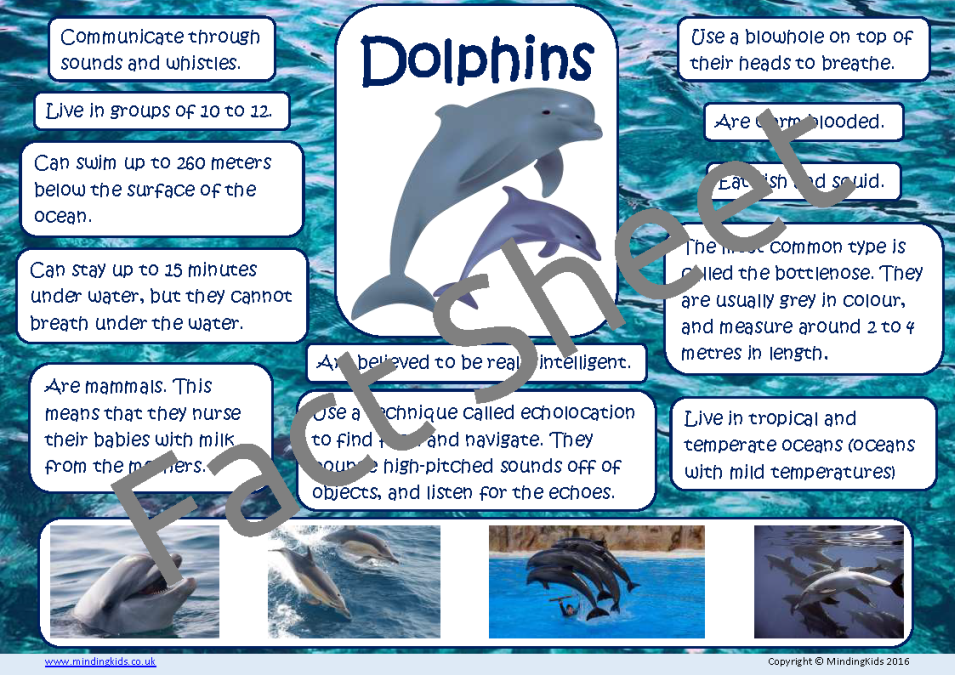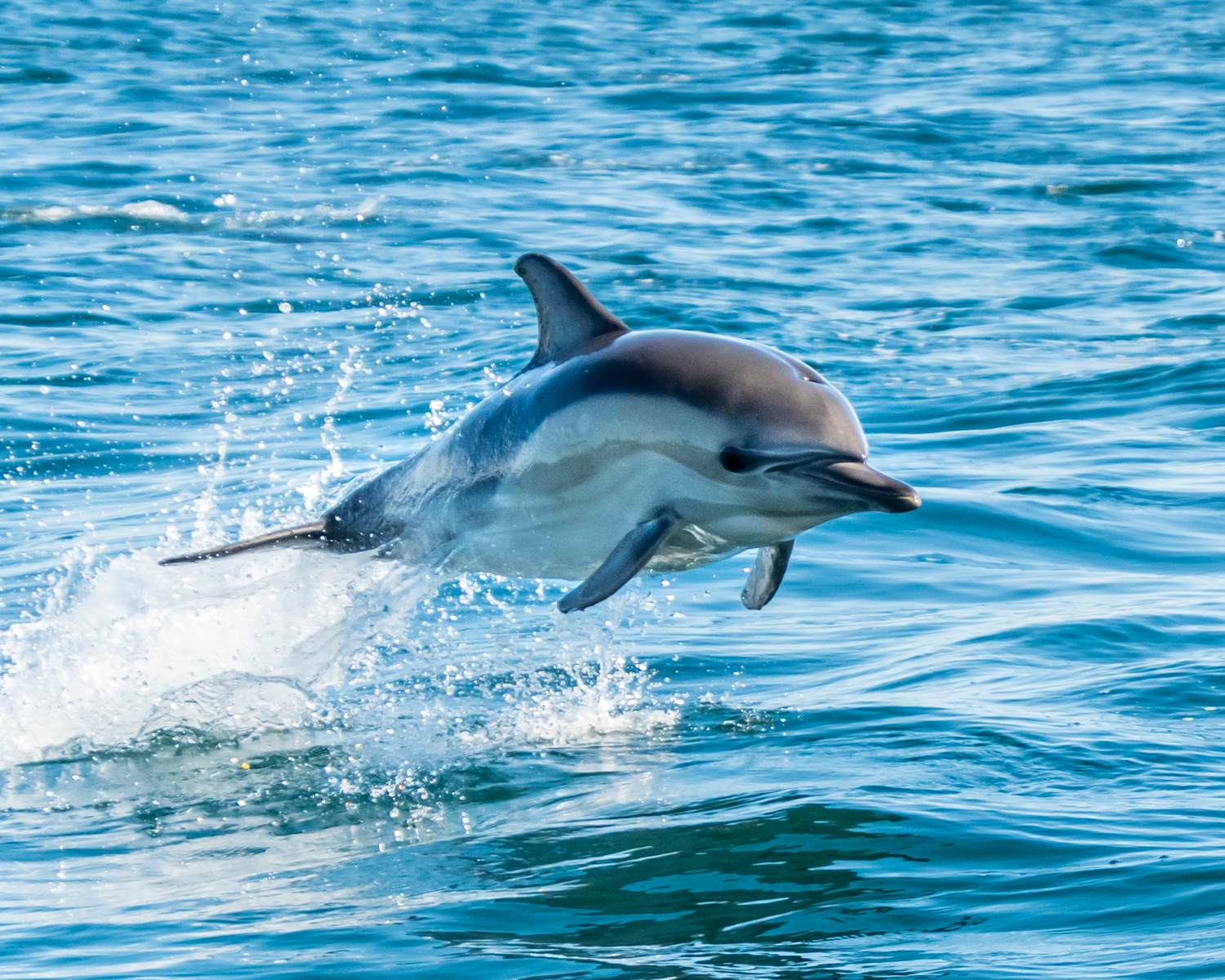Introduction Dolphin Facts: Nature's Intelligent Marine Mammals
Dolphins, typically concerned as among the ocean's most intelligent citizens, display a fascinating selection of habits and social frameworks that call for closer examination. With over 40 distinctive species, these aquatic mammals not just demonstrate remarkable communication skills and complicated social interactions however likewise have sophisticated cognitive capacities that challenge our understanding of non-human intelligence. Dolphin Facts. As we discover the subtleties of their lives, one must think about exactly how these characteristics affect their communications with people and journalism significance of conservation. What ramifications do these insights hold for our relationship with these amazing creatures?
Dolphin Variety Diversity
Dolphins are a diverse group of marine mammals belonging to the household Delphinidae, which includes over 40 unique species. This family members includes popular species such as the typical bottlenose dolphin (Tursiops truncatus), the whale or killer whale (Orcinus orca), and the risso's dolphin (Grampus griseus) Each varieties shows special physical qualities, behaviors, and adaptations that enable them to flourish in different marine environments.
Dolphin varieties vary dramatically in dimension, varying from the little Maui's dolphin (Cephalorhynchus hectori) at around 1.2 meters to the orca, which can reach lengths of approximately 9 meters. Their pigmentation additionally varies, with some types displaying striking patterns that help with camouflage or social signaling. Additionally, dolphins live in varied habitats, from coastal areas and tidewaters to the open ocean, showcasing their adaptability.
Research right into dolphin types diversity highlights the eco-friendly relevance of these animals, as they play vital functions in marine ecosystems. Recognizing the different species is important for preservation initiatives, as numerous face threats from environment loss, contamination, and climate modification, necessitating targeted defense steps to guarantee their survival.
Social Structures and Behavior
The intricacy of dolphin varieties is mirrored in their intricate social frameworks and actions. Dolphins are recognized for their highly social nature, commonly developing teams called capsules, which can vary from a couple of individuals to over a hundred. These vessels are generally made up of family participants, showcasing a matrilineal framework where ladies play a main role in keeping social bonds and nurturing spawn.

In addition, some varieties of dolphins, such as whales, demonstrate complex social actions that can consist of sub-pods or clans with unique cultural techniques. These social structures are important for the survival and wellness of dolphin populations, as they help with communication, teamwork, and the transmission of expertise across generations. Recognizing these social characteristics is important for conservation initiatives and the defense of their all-natural environments.
Interaction Strategies
Among the various approaches of interaction, dolphins make use of a sophisticated selection reference of interaction methods that facilitate social cohesion and control within their shucks. These techniques include articulations, body language, and echolocation, each offering distinctive functions in their social communications.
Dolphins produce a variety of clicks, whistles, and pulsed noises, which work as their primary singing interaction. Each dolphin has a distinct trademark whistle, comparable to a name, that enables people to recognize one another even in huge teams. These vocalizations can communicate numerous messages, such as notifying others to risk or coordinating group activities throughout hunting.
Along with articulations, body movement plays an essential function in dolphin interaction. Dolphin postures, such as leaping, spinning, or even refined changes in orientation, communicate moods and intentions. For instance, aggressive displays may prevent opponents, while playful behaviors can enhance social bonds.
Echolocation, an organic sonar system, more help in navigation and searching. By sending out acoustic waves and interpreting the returning echoes, dolphins can locate prey and obstacles effectively, demonstrating their remarkable adaptability in complex marine settings. Jointly, these interaction methods highlight the elaborate social lives of dolphins, highlighting their intelligence in navigating their undersea globe.

Knowledge and Problem Fixing
Recognized for their advanced interaction abilities, dolphins likewise show amazing knowledge and problem-solving capabilities that further improve their social communications. Their cognitive capabilities are confirmed by their capacity to learn intricate tasks, comprehend abstract principles, and adapt to different ecological challenges. Research study has actually revealed that dolphins can solve complex problems, demonstrating not only their cognitive versatility yet also their capability for preparation and insight.
Dolphins frequently involve in participating hunting methods, showcasing their capacity to work as a cohesive system. This synergy requires sophisticated analytical abilities, as they must evaluate their setting, determine potential address victim, and collaborate their activities to achieve a common goal. Furthermore, dolphins have actually been observed utilizing devices, such as aquatic sponges, to secure my response their noes while foraging on the sea flooring, more exhibiting their ingenious analytic capacities.

Human-Dolphin Communications
Human-dolphin interactions have astounded researchers and lovers alike, highlighting the complicated relationship between these smart aquatic mammals and human beings. From ancient times, dolphins have actually been shown in art and mythology, representing consistency and knowledge (Dolphin Facts). Modern communications range from scientific research study and preservation initiatives to recreational activities like dolphin swimming and seeing with dolphins
Research has demonstrated that dolphins possess progressed social frameworks and interaction abilities, which facilitate their interactions with humans. These experiences typically cultivate psychological links, with many people reporting feelings of delight and empathy during such experiences. However, it is vital to come close to these communications with care, as human tasks can interfere with dolphin actions and environments.
Preservation campaigns significantly concentrate on advertising responsible communications, ensuring that human excitement does not compromise dolphin well-being. Education and learning programs intend to increase understanding about the ecological significance of dolphins, highlighting the demand for sustainable methods.
Verdict
In summary, dolphins exhibit impressive intelligence and versatility within varied marine atmospheres. Proceeded research and understanding are necessary for fostering a deeper understanding of dolphins and advertising their welfare in a progressively intimidated ecosystem.
Dolphin species vary substantially in dimension, varying from the small Maui's dolphin (Cephalorhynchus hectori) at around 1.2 meters to the whale, which can get to sizes of up to 9 meters. Dolphins display a range of social interactions, consisting of brushing and physical call, which offer to enhance relationships and establish hierarchies.
Acknowledged for their sophisticated interaction abilities, dolphins additionally show impressive intelligence and analytic abilities that even more boost their social communications. Modern interactions range from clinical research and conservation initiatives to leisure tasks like dolphin swimming and watching with dolphins.
Study has shown that dolphins have advanced social structures and communication skills, which promote their interactions with people.